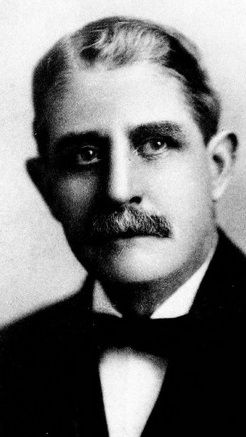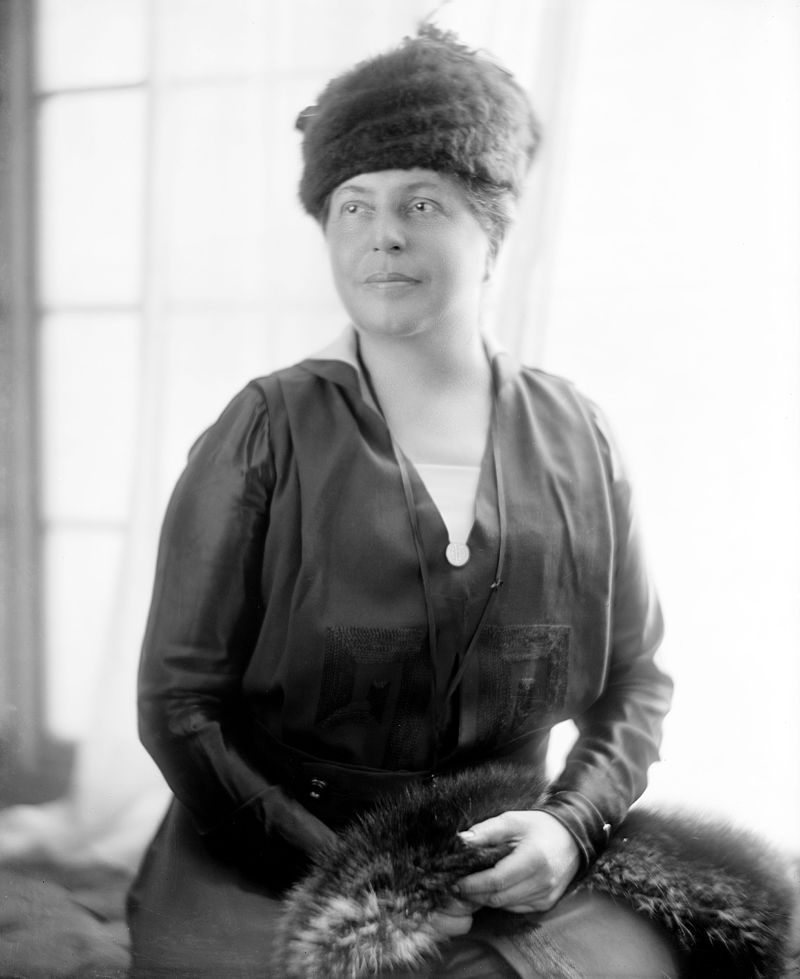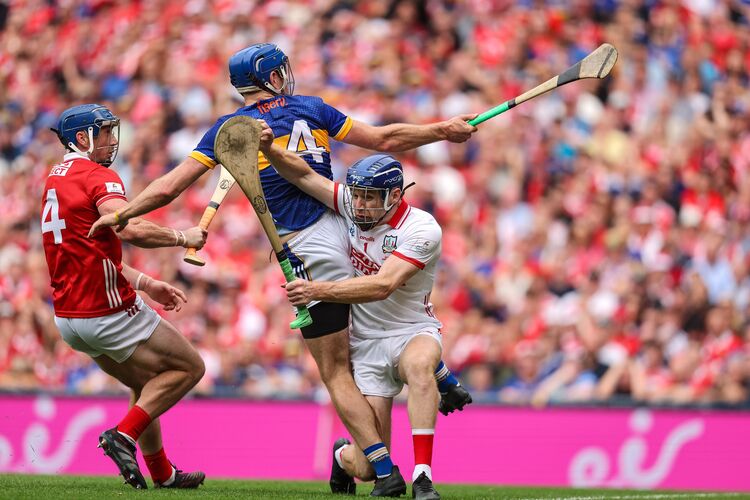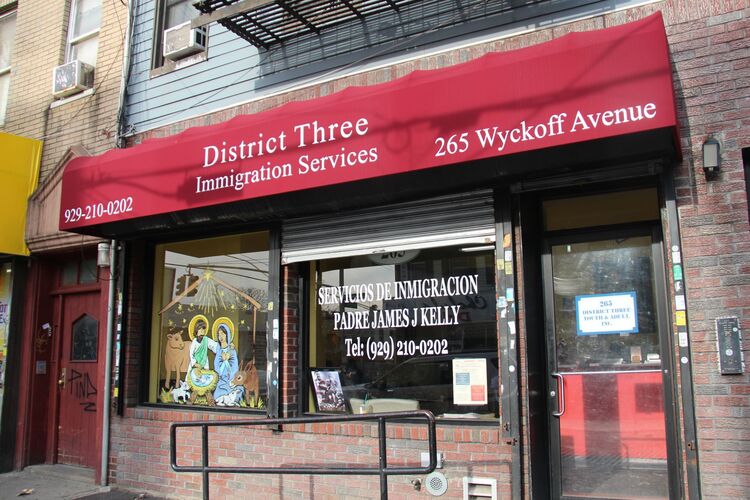The United States, claimed Franklin Delano Roosevelt, was “a Protestant country and the Catholics and Jews are here on sufferance.”
Terry Golway writes that the president said that in 1942, “when Catholics and Jews were fighting in Europe and the Pacific against racist and exclusionary regimes.”
In his essay “’Tammany’s Chosen People’: How the Irish Courted the Jewish Vote in Progressive-Era New York,” he says, “That shared sense of alienation from the cultural mainstream, and the feelings those fears produced, surely played a key role in the Tammany-Jewish alliance.”
Golway’s contribution to “Forged in America” – an excellent collection of essays from NYU Press -- is one that helps justify the subtitle “How Irish-Jewish Encounters Shaped a Nation.”
He takes as a starting-point Daniel Patrick Moynihan’s suggestion that New York was “perhaps the first great city in history to be ruled by men of the people.”
The Irish takeover of Tammany was secured with the ascension of "Honest John" Kelly as boss in 1871, and eventually its leaders had to come to terms with the city’s large and growing Jewish population.
It’s a story that involves the Lower East Side’s political leader John Ahearn at the turn of the century up through the period after Tammany’s power had faded, but when a powerbroker like the Bronx’s Edward Flynn could have close ties both to the Jewish community locally and to successive Democratic Presidents Roosevelt and Truman in the White House.

John F. Ahearn.
In the early 20th century, Tammany was forced to the left by the electoral challenge from the socialist movement, which in New York was disproportionately Jewish, although the machine’s politicians would also find justification for social reform in Pope Leo XIII’s 1891 encyclical “Rerum Novarum.”
Miriam Nyhan Gray and Hasia Diner, editors of “Forged in America,” write that the stories of ethnic groups are so often told in “splendid isolation” from each other, and yet “we know from many plotted urban histories that immigrants rarely lived in spaces only with others from the same place of origin, speakers of their same languages, or adherents of the same religious traditions” and that immigrants and their children “had ample opportunity to intersect with people unlike themselves, people they might not have met had they not immigrated to the United States.”
In his foreword, Kevin Kenny writes about the “tension, conflict and bigotry” involved in a relationship that would go on to have a huge impact on American life.
The Irish set the template for others, he says of that evolving impact.
“When Jews in New York or Chicago looked for models of immigrant adjustment and success, they found everyday models in the Irish example. This was true of life on the streets and in the tenements, in the labor movement, in politics, in education, and in popular culture. Irish and Jewish immigrants, after all, did not simply become American: they became either Irish-American or Jewish-American. Acquiring an ethnic identity was a precondition for becoming American, not an impediment; the hyphen operated as a means towards assimilation rather than an obstacle.”
He says, “Refusing to renounce their heritage in the United States, especially when it came to religion, Irish immigrants laid down the model of cultural pluralism.”
Kenny continues, “In their interactions in the early 20th century, Jewish and Irish Americans expanded upon and enriched this model of cultural pluralism.”
Later he writes, “Neither side wanted to break down all the social, cultural, and religious boundaries between them, as these boundaries defined their communities (and, to varying degrees, created stratifications and divisions within those communities). But by coming together as they did, maintaining difference through interaction, both sides had something to gain.”
Political ideology is a theme in Hannah Zaves-Greene’s compelling dual profile of a nurse who’d been born into a middle-class family of Central European Jewish heritage in Rochester, N.Y., and another from working-class Corning, N.Y., who was the daughter of Irish Catholic immigrants: “The Right to Choose: The Public Health and Birth Control Movements of Lillian Wald and Margaret Sanger.”
She writes, “Whereas Wald came to socialism through public health, Sanger came to birth control through socialism.”
Zaves-Greene comments also about the woman who founded the Henry Street Settlement House in the heavily East European Jewish Lower East Side, “Wald charged society, not the poor, for producing and failing to address the problems of poverty, and stressed that ‘care and prevention’ afforded a better mode of amending social justices than ‘police power and punishment.’”

Lillian Wald.
The only other biographical piece is Robert W. Snyder’s “Jews, Paul O’Dwyer and a New York Life.”
Some years after County Mayo immigrant Paul O’Dwyer arrived in New York in 1925 at age 18, he followed the advice of his much older brother Bill O’Dwyer, the future mayor, to look beyond the Irish community. One constant, in that regard, over his long career as lawyer, politician and activist, was his advocacy on behalf of Jews and Jewish causes.
Even though the younger O’Dwyer possessed many of the interpersonal skills of an old-style pol, his electoral career was somewhat checkered. That was due, in part, to the fact that although he was a militant Irish nationalist and raised his children in the Catholic faith, his outspoken left-leaning views and his championing of non-Irish causes cut him off somewhat from a natural hinterland.
O’Dwyer appears, however, to have moved with ease among and mended fences between various factions of liberals, progressives and radicals – an ability, Synder argues, that was made possible by his being himself part liberal, part progressive and part radical.
Sometimes, though, he was seen as going a little too far in the other direction.
“When [future Israeli Prime Minister Menachem] Begin visited New York in 1948 O’Dwyer welcomed him,” Snyder writes, “dismissing criticism from both establishment and leftist Jews who considered him a right-wing terrorist.”
One of O’Dwyer’s alma maters, St. John’s University, is the subject of Jeffrey S. Gurock’s study, “A Tradition of Acceptance: Jews and Their Basketball Players at an Irish Catholic College.” It’s a remarkable story of multicultural inclusion from the late 1920s on that began in the classroom. It’s also a revealing and fascinating account of how people looked to stereotypes, both negative and positive, in attempting to explain why Jewish players were so good at basketball.
And moving from the local to the global, Marion Casey in “The Irish, the Jews and Wilson’s ‘Self-Determination’” tells the story of how nationalists from both groups took the president literally. Very early on in this episode, Robert Lansing, the U.S. secretary of state, said the term “is simply loaded with dynamite. It will raise hopes which can never be realized…What a calamity that the phrase was ever uttered! What misery it will cause!”
There are three very interesting essays on arts and culture. In one of them, “Defending Literary Genius: James Joyce’s ‘Ulysses’ on Trial,” Brett Gray writes, “Two Jewish New York City lawyers, Morris Ernst and Alexander Lindey, planned the battle to free ‘Ulysses’ from the clutches of the censors, making the story of the Joyce’s protagonist, Leopold Bloom, a Dubliner of Irish and Jewish parentage, available for all the world to read.”
Gray says, “The book’s official status as an obscene work offended and galvanized the literary world. Malcolm Cowley, editor of the New Republic, affirmed his enlistment in the plan to fight its censorship, declaring that ‘James Joyce’s position in literature is almost as important as Einstein in science. Preventing American authors from reading him is about as stupid as it would be to place an embargo on the theory of relativity.'”
Lindey predicted it would be the “grandest obscenity case in the history of law and literature,” and winning it, Gray writes, required “prodigious dedication and aplomb.”
More than 40 years later, upon his death in 1976, Ernst’s New York Times obituary was headlined “the man who freed ‘Ulysses.’”
Together the 10 essays (six are cited here), with the foreword and the introduction, go a long way towards beginning to tell the story of how Irish-Jewish encounters played a role in 19th- and 20th-century American life. Some contributions, such as those by Golway and Professor Kenny, who is director of Glucksman Ireland House at NYU, are rather more central to that project. Presumably, though, the essayists generally weren’t tasked with explaining how one inter-ethnic relationship “shaped” America. So, the subtitle overreaches -- a minor quibble in an age when we’re invited constantly to click on articles that have “how” and “why” in the title and then fail to deliver.
Kenny points out that “Forged in America” does not claim to be “exhaustive or definite”; but one might reasonably predict that the high quality of the collection will inspire further study and more books.
This volume, by the way, is dedicated to a dynamic couple whose vision, say the editors, led to NYU’s famous Irish and Irish-American studies program headquartered at Glucksman Ireland House.
An alternative, unofficial subtitle, then, suggests itself: “Essays in honor of Loretta Brennan Glucksman and the late Lew Glucksman.”







